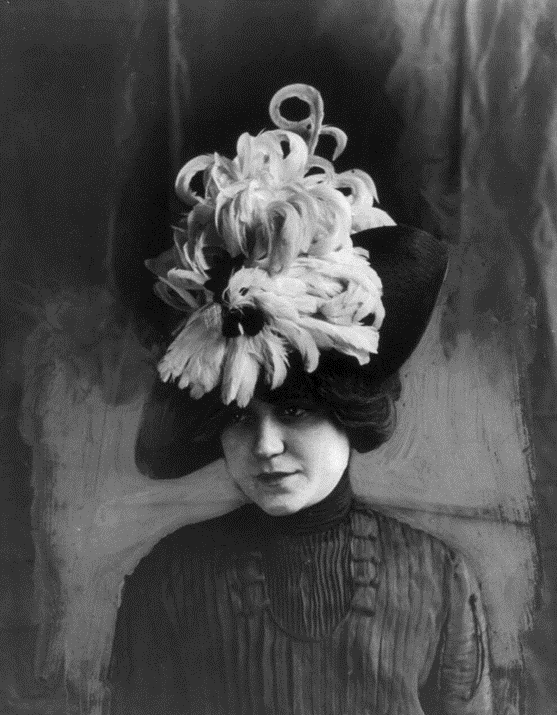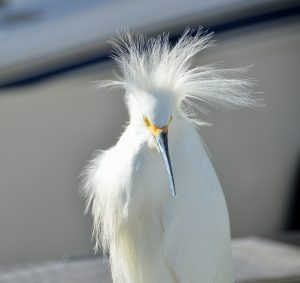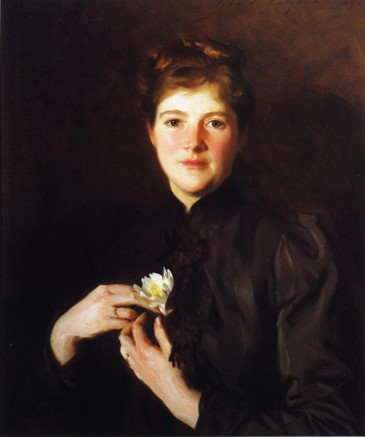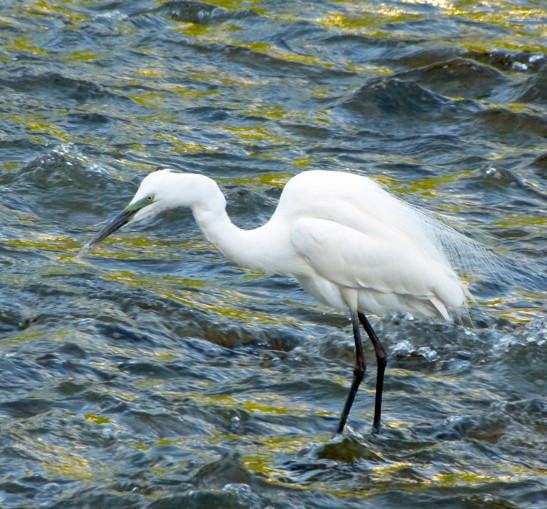The Plume Trade: When Killing was Fashionable

The origins of the Plume Trade can be traced back to the 19th century and Victorian fashion, a style that included elaborate assortments of silk, ribbons, and exotic bird feathers on large, wide brimmed hats.
Exotic plumes added dramatic color and detail and quickly became a symbol of elegance. Milliners (hat makers) used plumes from many of the wading birds native to Florida to design fashionable hats and accessories for high society customers in both the Americas and Europe.

The demand for these feathers grew dramatically. By the year 1886, birds were hunted for their feathers at the rate of five million birds a year. Plumes, and sometimes entire birds, were shipped to millineries in the growing fashion capitals of New York and London to be designed into hats and sold to the public.
By today’s standards, the Plume Trade was a horrible business. Adult birds, sometimes entire breeding colonies, were killed for their feathers. Eggs were left behind and orphaned hatchlings were left to starve or be eaten by predators. This fashion statement led to the near extinction of several wading birds, including the Snowy Egret, Roseate Spoonbill, Flamingo, the Great Egret and more. It is estimated that 50 North American species were being slaughtered for their feathers.

The more desirable these feathers became, their worth continued to increase. This was especially true for the beautifully unique, wispy feathers of the Snowy Egret that only grow during breeding season. These special plumes are called aigrettes and were once worth $32 an ounce, almost double the price of gold at the time.
Changing of a Paradigm: Founding of the National Audubon Society
By the year 1896, two passionate amateur naturalists, Harriet Hemenway and her cousin Minna B. Hall organized a series of afternoon teas, inviting high-society Boston women. Using these meetings as a platform, Hemenway and Hall were able to convince over 900 women to boycott hats using feathers. That same year, they founded the Massachusetts Audubon Society, the first Audubon Society in North America.

The founding of this group played a critical role in the conservation of birds endangered due to the Plume Trade, advocating the passing of laws and protection rights for birds.
The Massachusetts Audubon Society was instrumental in the support and passage of many state and federal laws protecting birds throughout our country, starting with the 1897 law outlawing the trade of wild bird feathers in Massachusetts. By 1900, the group assisted in the passing of the 1900 Lacey Act, prohibiting the trafficking of animals that are killed in violation of local laws. In 1901, the Audubon Model Law was passed, protecting all water birds from the dangers of plume hunting. The Migratory Bird Treaty Act was signed into law in 1918 and protected almost all species of birds (except for game birds) across state lines, and is considered one of the oldest federal wildlife protection laws.
The Massachusetts Audubon Society had forged the way for many other states to establish their own Audubon Societies. In 1901, they joined together to help establish the first National Wildlife Refuge in 1903, Pelican Island in Florida. By 1905, the Massachusetts Audubon Society helped organize the National Association of Audubon Societies, which would later become what is currently known as the National Audubon Society. Through strong conservation efforts and banning the Plume Trade, the population of egrets, herons, and other water birds that were once endangered are now protected and recovering, sometimes thriving, across the world.
Let’s hope that conservation continues to be fashionable, if not perhaps a fundamental paradigm for our future.
Learn More About Florida’s wading birds, the Plume Trade and the Founding of the Audubon Society:
-

Snowy Egret. Credit: Jason Goh, Pixabay Watch our Wild Sarasota webinars on egrets, herons and cranes, other wading birds and more at our Florida Wildlife webpage.
- Enjoy information about a variety of bird species at Cornell Lab of Ornithology’s All About Birds website.
- Don’t forget to visit our local Sarasota Audubon Society and Venice Area Audubon Society.
- Learn more about the history of the National Audubon Society at www.audubon.org
Read all our Wild Sarasota blogs HERE
Resources
- History of Audubon and Science-based Bird Conservation
- How Two Women Ended the Deadly Feather Trade
- Huffstodt, Jim. (2000) Everglades Lawmen: True Stories of Danger and Adventure in the Glades. Sarasota, FL: Pineapple Press, 2000.
- McCally, David (1999). The Everglades: An Environmental History. University Press of Florida.
 1
1

